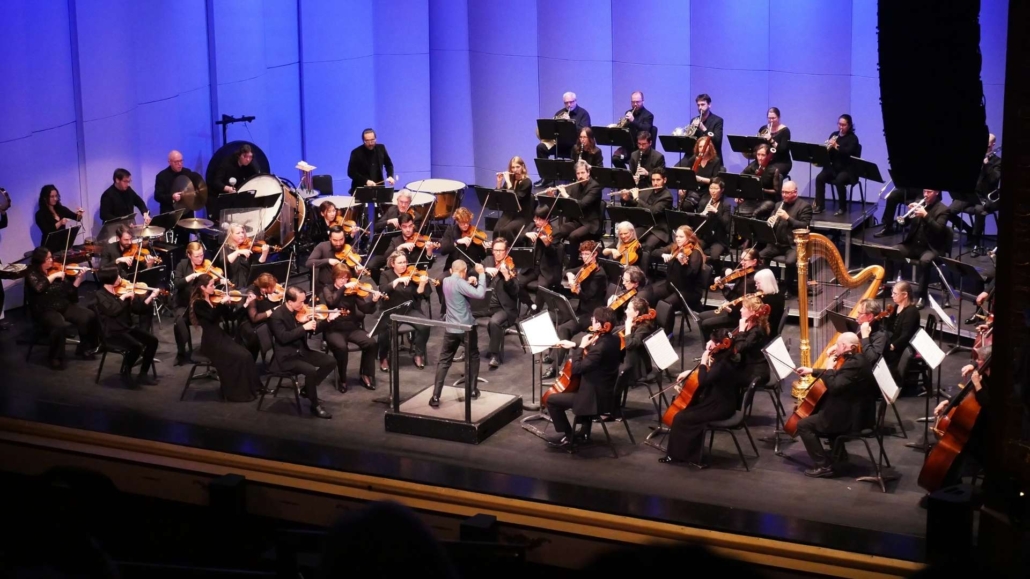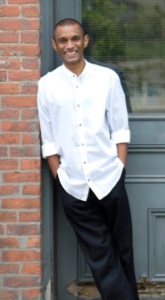According to composer, pianist, and conductor Dinuk Wijeratne, his “quasi-piano-concerto” Gajaga Vannama is “me on a plate”. And that’s not just an opinion: it is an empirical fact.
For proof, let’s first consider the biographical material Wijeratne helpfully supplied in his program notes for the work’s 2019 premiere. “The two most prominent ethnic groups of Sri Lanka—the island country of my birth—are the Sinhalese and the Tamils. I happen to be a product of both,” he wrote. So we’ve immediately identified that he is comfortable with a complex cultural identity, further complicated by his mother’s training in classical ballet.
After early exposure to European classical music—Wolfgang Amadeus Mozart provided the “aha” moment, apparently, at the age of 12—piano lessons followed; eventually, Wijeratne left Sri Lanka for New York City, where he studied with John Corigliano at Juilliard. He presently splits his time between composing, teaching, and conducting. Thus we have a sophisticated world-traveller, well versed in navigating cross-cultural waters, with a passion for the Sri Lankan traditional arts and a deep love of Western music—including, not at all incidentally, the improvisational freedom of jazz. But that’s reductive: Wijeratrne would likely argue that fixed categories of musical influence are less important to his creativity than sheer, unfettered imagination.
Gajaga Vannama, he suggests, “is a highly personal musical interpretation and realization of a traditional melody and classical ‘Vannam’ dance-form that dates back to the early 1700s. In the royal courts of the city of Kandy, the last capital of the era of the ancient kings, the vannamas evolved from short sung melodies into longer, substantial dance pieces.” Of the 18 traditional vannam dances, he elaborates, the original Gajaga Vannama depicts “the majestic gait of the celestial elephant of the great god Sakra”, a mythological beast with 8 trunks, 16 tusks, and a fondness for frolicking in the celestial lotus ponds.
And yet, as Wijeratne points out, “We tend to perceive many artforms as being unchanging, ‘vertical’ creations that are fixed in time. Yet when we look closer, or dig into their histories, they reveal aspects of tradition and innovation in proportions that are delicate, subjective, and often hotly contested.” His Gajaga Vannama is a perfect realization of that understanding: it incorporates a direct quotation from the original’s underlying drum composition, but also allows for considerable interpretive freedom on the part of the soloist, while linking the courtly dances of Kandy to the minuets and gavottes of his early inspiration, Mozart.
All of these aspects come together seamlessly in the program that Wijeratne has built around Gajaga Vannama’s West Coast debut
Mozart’s Symphony No. 31 in D Major was a natural choice. “To be honest, if you put Mozart on any program with my music, I’m a happy guy,” Wijeratne says with obvious enthusiasm. “Even if my music sounds nothing like that on the surface, he was an artist, for me, who just epitomizes balance—balance as a virtue. Everything in his music is just in perfect, exquisite balance, and I think as an artist, as a human being, one is kind of striving for that. At least I feel like I am, in my music.
“And then there’s a whole bunch of other stuff,” he adds. “I love the lightness, I love the elegance, I love the influence of dance, again. It runs through all of his music, and particularly the piano concertos. If you said ‘Well, then, which pieces of Mozart’s would you take to a desert island?’ they would be the piano concertos.”
Once Wijeratne had established dance as a conceptual through-line, short works by Antonin Dvořák and Béla Bartók suggested themselves as ideal appetizers for Gajaga Vanamma’s entrée. “I love all of the Slavonic Dances, so it was nice to pick one to sort of start the show off with a bang,” he explains. “And then that takes us nicely into the Bartók. The Bartók connection is that he is one of my idols, for sure, because when I realized that my music was going in this direction of dance and East/West, I was a grad student in New York, and I just devoured Bartók. I actually went through every single book in the library on Bartók, just so that I could learn how he’d done it. In his case, what I wanted to learn was the integration of folk music within a Western classical concert idiom. And so I spent all that time in my life just trying to figure out how he’d done it, and it was very instructive. I would say the influence of that has resulted in pieces like Gajaga Vannama, because running through the piece is this kind of folk song.”
Folk elements are largely discarded in the second half of this program, but not the idea of spinning out elegant variations on earlier and arguably simpler themes. Yes, there is a certain amount of controversy attached to Johannes Brahms’ Variations on a Theme of Haydn, mostly to do with whether it’s actually Haydn that Brahms is referencing. There’s a convincing if not entirely decisive case that the theme in question was actually penned by Ignaz Pleyel, although further ambiguity is introduced by the fact that Pleyel was Haydn’s student. Attribution aside, however, what Brahms’ Opus 56a most clearly shows is that warm innovation can flow from the loving appraisal of the past, as Wijeratne’s own work so amply demonstrates.
As for the Haydn/Pleyel dispute, Wijeratne is unwilling to take sides. “I just marvel at Brahms’ technique,” he says, laughing. “All of the music is appealing, I think, and I look forward to guiding people through the reasons why these works have been tied together.”
Notes by Alex Varty



